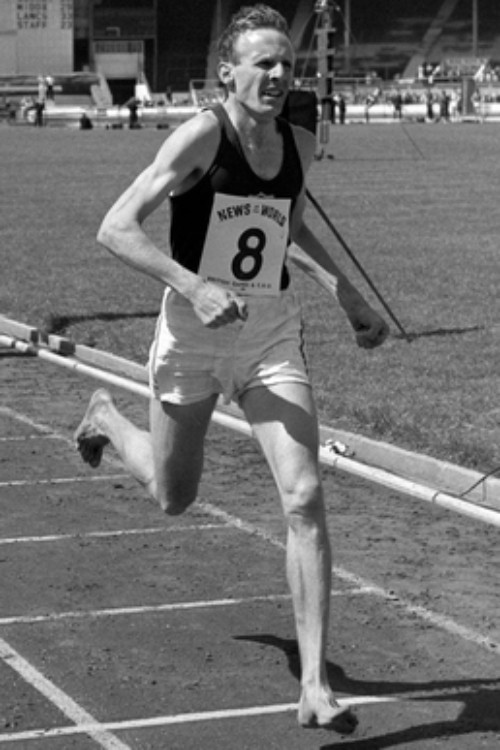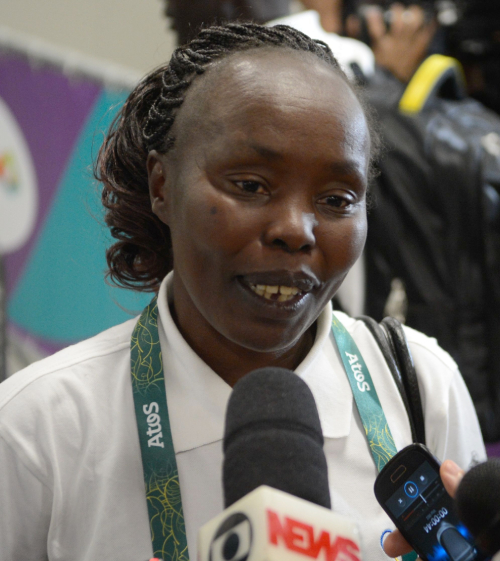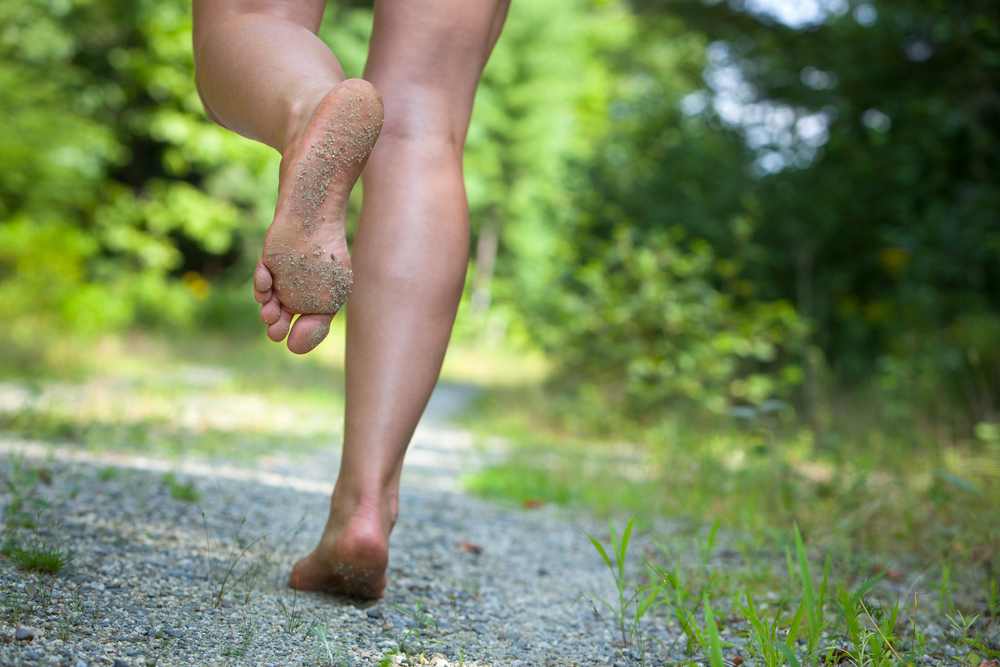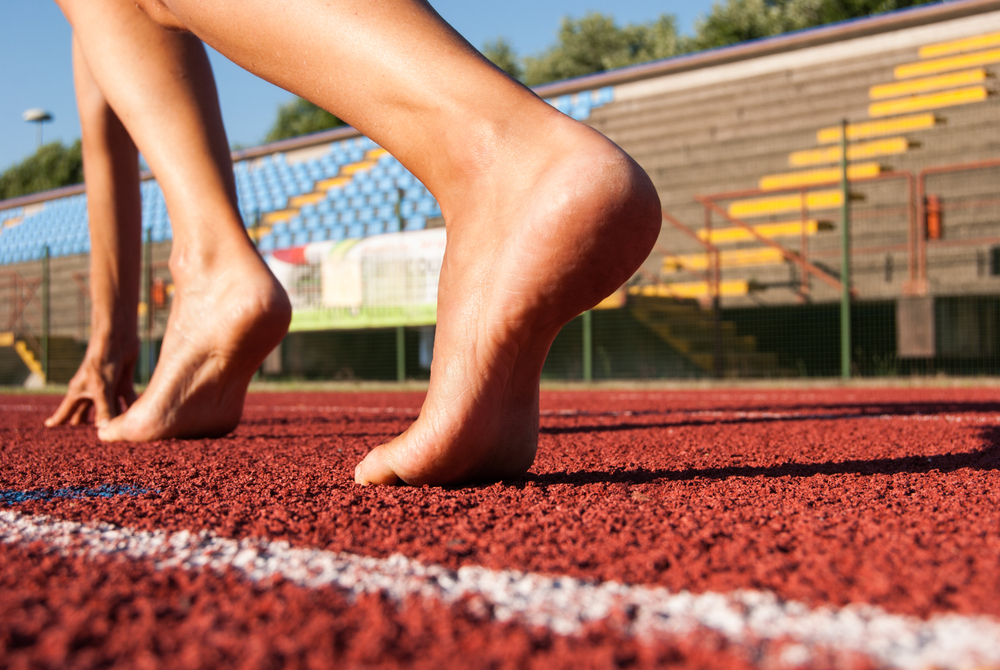Barefoot running has been a part of human history for centuries. These days, many runners still forgo running shoes. Let’s explore some famous barefoot runners.
Barefoot running is not a new phenomenon. People have been running without shoes for thousands of years. Even with the invention of running shoes designed to help athletes perform at their very best, more and more runners are going without them.
In the modern era, barefoot running gained popularity in the 1960s when Abebe Bikila of Ethiopia won the Olympic marathon in Rome running barefoot. Bikila’s gold medal is the most famous barefoot victory in modern running history, and many athletes have followed in his footsteps.
Let’s learn more about Bikila and other famous barefoot runners. You might also be interested in our round-up of famous free runners.
Contents
Famous Barefoot Runners
Zola Budd
Zola Budd is a South African middle-distance and long-distance runner. She gained notoriety for running barefoot in international competitions, including the 1984 Olympics in Los Angeles, where she famously collided with Mary Decker.
She set a world record in the women’s 5000 meters in 1984 and 1985. Budd also won the World Cross Country Championships twice.
Abebe Bikila
Abebe Bikila was an Ethiopian runner who won the gold medal in the marathon at the 1960 Rome Olympics. The achievement made him the first Black African to win an Olympic gold medal.
Bikila repeated the feat at the 1964 Tokyo Olympics, this time wearing shoes. Learn more in our guide on famous Ethiopian marathon runners.
Herb Elliott
Herb Elliott is an Australian runner. He was one of the most renowned middle-distance runners of his time and famously trained barefoot.
Despite having a short career, he left his mark undefeated in the mile and 1500-meter races he participated in, including nabbing a gold medal in the 1,500-meter race at the 1960 Summer Olympics.
Ken Bob Saxton
Ken Bob Saxton is one of the most prominent faces in the barefoot running community. Although he’s not a professional athlete, he co-authored the book Barefoot Running Step by Step.
Known as the “godfather of barefoot running,” Saxton participated in over 400 races, including 79 marathons. He also coached other runners interested in this technique.
Nico Surings
Although Belgian runner Nico Surings is not a professional athlete, he became a name to remember in the barefoot running world. In 2006, he became the quickest person to run 100 meters on ice without wearing shoes. He finished the feat in 17.35 seconds.
Shivnath Singh
Shivnath Singh was a renowned long-distance barefoot runner from India. He is best known for breaking the Indian marathon record in 1978, finishing in two hours and 12 minutes. To this day, the record has yet to be topped.
He also represented India twice in the Asian Championships and the Olympics.
Bruce Tulloh

Bruce Tulloh was a British long-distance runner who won the gold medal in the 5000 meters at the 1962 European Championships. He was known for his barefoot running style, which he believed helped him run faster and avoid injuries.
One of the athlete’s career highlights came in 1969 when he ran from Los Angeles to New York City in 64 days, shaving four days off the previous record.
Charles Robbins
Charles “Charley” Robbins was one of the most well-known barefoot runners. Some of his highlights included coming in third place in the Boston Marathon in 1944 and winning 11 long-distance championships.
He participated in the Manchester Turkey Day Race 50 times. The runner won the 1945 race and had numerous top-10 wins after that.
Tegla Loroupe

Tegla Loroupe is a ground-breaking athlete who got her start as a barefoot runner. She won the 10,000-meter event at the Goodwill Games twice without shoes.
In 1994, she became the first African woman to win the New York City Marathon. She participated in the race the following year and came first again. On top of winning three world half marathon championships, she also beat the London Marathon, the Rome City Marathon, the Cologne Marathon, and more.
Challenges Of Barefoot Running

Many barefoot runners do so because they feel it provides more control. They also like to feel closer to nature.
Barefoot runners believe it is a more natural way of running due to its unique impact on the body. The barefoot running technique involves landing on the forefoot or midfoot rather than the heel, which may reduce the impact on the body, but more research is needed.
If this is something you’d like to partake in, do so with caution and only with the help of a personal trainer, as there are many challenges this running style presents.
Increased Risk Of Injury
One of the main challenges of barefoot running is the increased risk of injury. Without the cushioning and support shoes provide, the feet and legs are more vulnerable to impact and stress.
Barefoot runners are more likely to experience cuts, bruises, blisters, and other injuries on their feet. They are also at higher risk of developing stress fractures, plantar fasciitis, and Achilles tendonitis.
Environmental Hazards
Barefoot runners are more exposed to environmental hazards like sharp objects, rocks, and hot surfaces. They may also be more susceptible to cold weather and wet conditions, which can lead to discomfort and injury.
Adaptation Period
Transitioning to barefoot running requires an adaptation period, during which the feet and legs must adjust to the new running style. It can take several weeks or months and may involve discomfort and soreness.
Limited Terrain
Barefoot running is not suitable for all terrains. Rough or uneven surfaces, such as gravel, concrete, or rocky trails, can be particularly challenging and increase the risk of injury. Barefoot runners may need to limit their running routes to smooth, soft surfaces like grass or sand.
This article was researched with the help of OpenAI and fact-checked and edited by our human editor.



